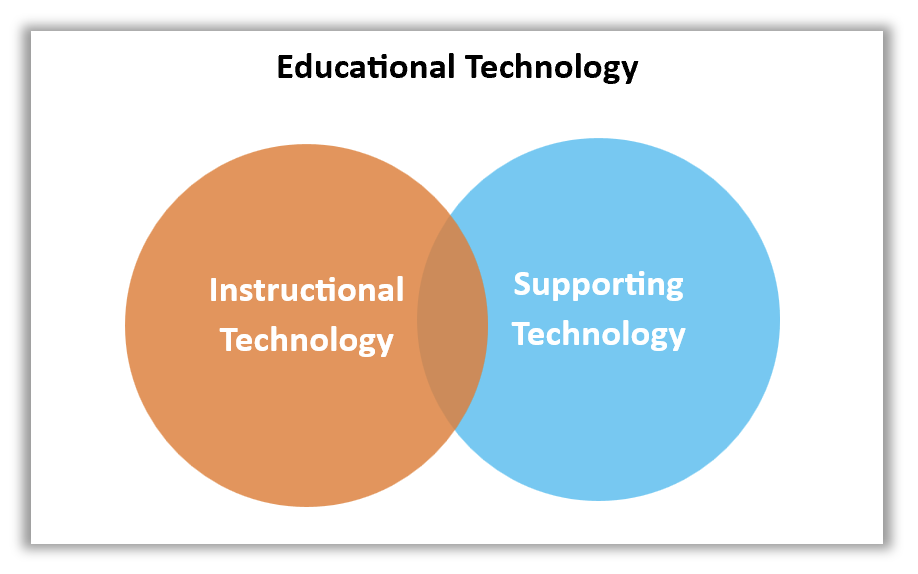Educational Technology VS Instructional Technology
The two terms “Educational Technology” and “Instructional Technology” we have been using in our conversations … are the same or different? Many use them interchangeably, regardless! It is worth exploring, though, their meanings to clarify any distinctions.
To answer the question, we need to explore the definitions of both terms. Let’s start by defining Instructional Technology. Instructional is the adjective form of instruction, which is an act or process of imparting knowledge, skill, or information from one person to another (Oxford University Press, n.d., n., sense 4). Instructional Technology can then be defined as the technology used for instruction from the development to the delivery to the improvement. During these processes, tools and resources are developed or adopted, evaluated and implemented to create instruction that meets specific learning objectives.
We will go the same route and define education. According to Mariam-Webster (2021), “education is the process of educating or being educated.” Bates (2015, p.25) also provides a broader perspective of the definition of educational technology as “a field involved in the facilitation of human learning through the use of technological tools and materials.” It suggests educational technology is involved in all levels of human learning: compulsory education, vocational education, higher education, and workplace learning, across various forms: formal, non-formal, or informal. Rather than a field of study, Roblyer (2006, p.2) argued that educational technology is a process that uses technology to address educational needs. Instruction is an intentional process and can occur in-person, synchronous, asynchronous, and hybrid settings. Does it echo how we defined Instructional Technology above? While learning outside of the classroom can be intentional, a significant portion is unintentional and contributes lifelong learning. Banner, for example, is a tool used in academic institutions to manage courses, faculty, and class assignments, student enrollments and their grades, etc. Honorlock, a system in need during the COVID-19 pandemic for remote proctoring, is another example of technology not intended for direct instruction, but to support learning.
In conclusion, it is technically acceptable to use both terms interchangeably as they refer to the integration of technology in education. The diagram below illustrates that Educational Technology is broader in scope because it encompasses all sorts of technology utilized in educating individuals. The intersection represents the technology that can be used for both instructional and support purposes.
What about Instruction Design? Where does it fit in the diagram? Please comment as I want to learn from you.

References:
Bates, A. W. (2015). Teaching in a Digital Age: Guidelines for Designing Teaching and Learning. Tony Bates Associates Ltd.
Merriam-Webster. (2021). Education. In Merriam-Webster.com Dictionary. Retrieved September 16, 2023, from https://www.merriam-webster.com/dictionary/education
Oxford University Press. (n.d.). Instruction, n., sense 4. In Oxford English Dictionary. Retrieved September 17, 2023, from https://doi.org/10.1093/OED/1733445551
Roblyer, M. D. (2006). Integrating Educational Technology into Teaching (4th ed.). Pearson Education.
